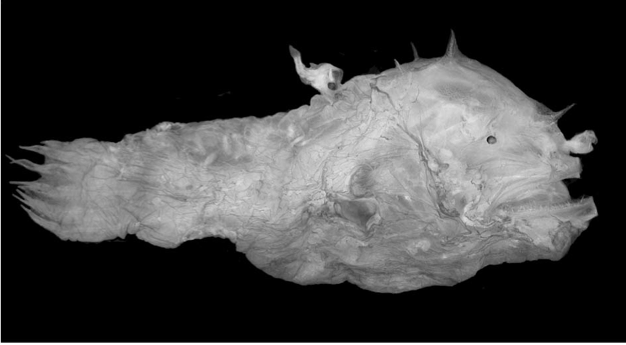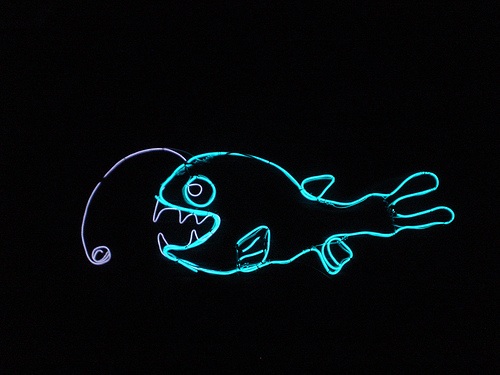Male Parasitism in Angler Fish
Biology 342 Fall 2006
Mikey Badr and Will Gester
Adaptation
Adaptation is the reason that a given behavior is still present in a population. In other words a behavior that propagates in a populations must provide some selective advantage or be paired with another behavior that does (spandrels). Since the behavior provides selective advantage, asking the question ‘what is the adaptive value?’ is equivalent to asking what fitness does the behavior provide.
Male parasitism in the context of ceratoids makes perfect since. Since ceratoids are deep sea living creatures and are quite sedentary, they hardly ever run across another member of the species (Pietsch 2005). Thus fitness is gained insofar as sexual recombination can be maintained while remaining in their niche of deep sea predation. The behavior allows for anglerfish to be widely dispersed and yet still be able to mate whenever it is energetically beneficial to do so. What is interesting about the chimeric nature of the ceratoid is that there does not appear to be any chance for female predation traits to be selected. This is so as the only interaction a male has with his environment is that of hunting down a mate and attaching himself. These behaviors have no intuitive connection to a females fitness (outside of attracting a male and choosing when to mate) and thus there seems to be no way to select for good female traits. In fact, it seems plausible that no sexual selection occurs at all and that the sexual dimorphism is merely a means to find small fish in a big ocean (Volrath 1998). Pictured below (top middle) is possibly the worlds smallest sexually mature vertebrate at 6.2 mm. It's testes are 22.6% the length of its' body (Pietsch 2005). The fact that these miniscule fish manage to chemically locate a female in the deep ocean and latch on is astounding.

Pietsch (2005)
